The Earth is home to countless geological wonders, many of which remain largely unknown and rarely documented. These unique formations, shaped by millions of years of natural processes, offer a glimpse into the planet’s dynamic history. From remote deserts to hidden caves, each of these sites tells a story of extraordinary beauty and mystery. In this article, we explore some of the most fascinating and lesser-known geological formations around the world, each with its own distinct characteristics and significance.
The Eye of the Sahara (Mauritania)
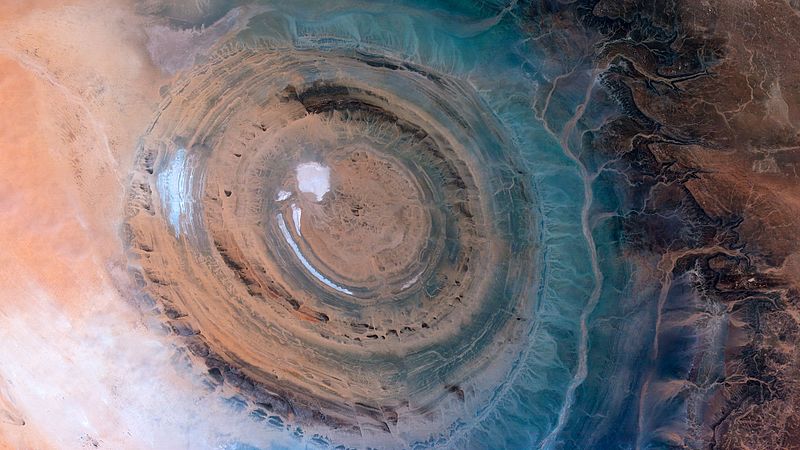
The Eye of the Sahara, or the Richat Structure, is an extraordinary circular formation that spans 25 miles in the Sahara Desert. Initially mistaken for an impact crater, geologists now believe it was formed by volcanic activity and erosion. This remarkable geological feature is considered priceless due to its unique and enigmatic nature. Despite being visible from space, the Eye of the Sahara remains largely unexplored by tourists, making it a truly rare wonder. Its remote location adds to its mystique and value as a geological treasure.
The Wave (Arizona, USA)
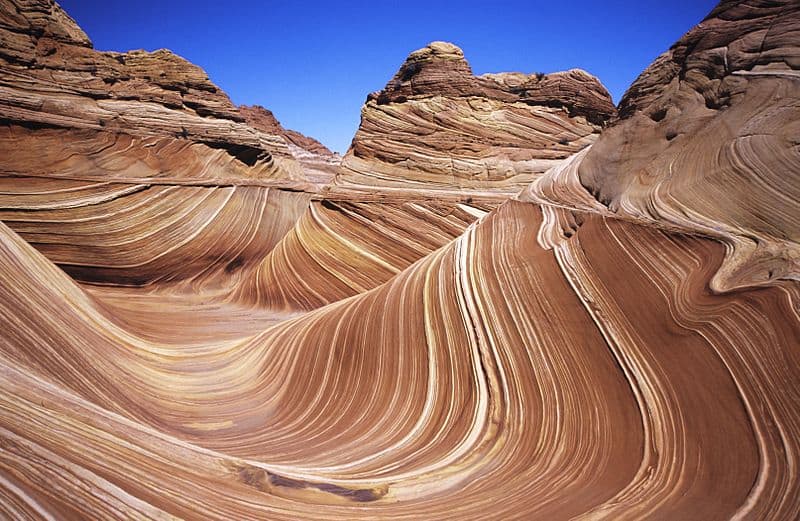
Nestled in the Coyote Buttes North area of Arizona, The Wave is a stunning sandstone formation known for its undulating, wave-like patterns. Created over millions of years by wind and water erosion, this formation is a popular yet highly regulated tourist destination. Access is limited to a small number of visitors each day, and permits are required, which are often sold through a lottery system. The rarity of access and the fragile nature of The Wave make it an invaluable natural masterpiece. This restricted entry ensures its preservation and adds to its allure.
The Marble Caves (Chile)
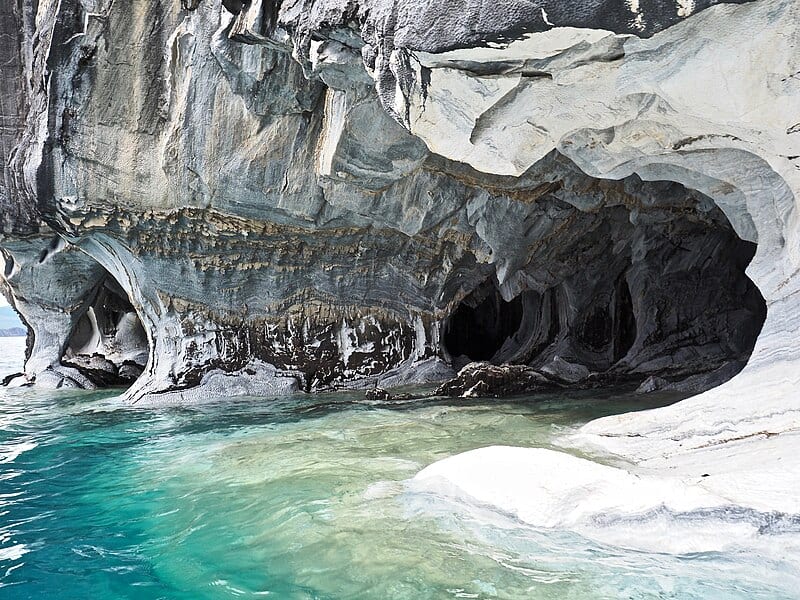
Located on the remote General Carrera Lake in Patagonia, the Marble Caves are a series of strikingly beautiful caverns carved into solid marble. The unique colors and patterns within the caves are the result of mineral deposits from the lake’s turquoise waters. The caves are accessible only by boat, adding to the rarity of visiting this natural wonder. The cost of a guided tour can range from $50 to $200, depending on the season and tour length. These caves are a testament to the incredible artistry of nature.
Chocolate Hills (Philippines)
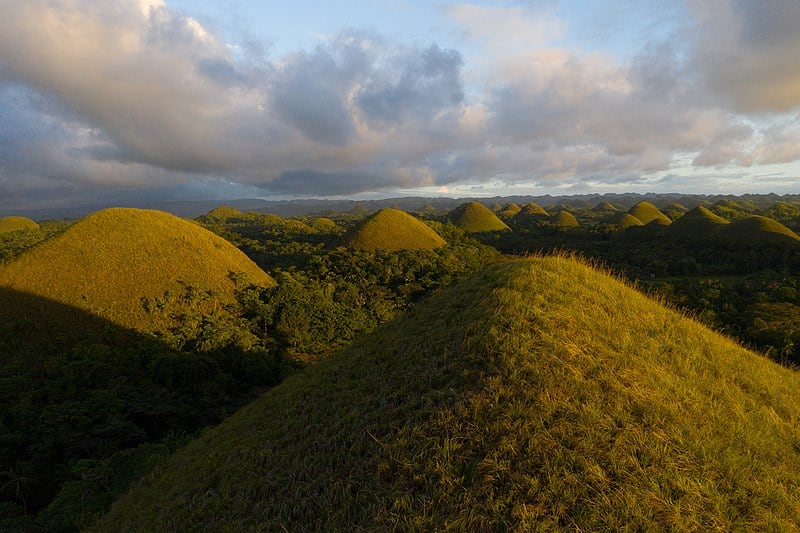
The Chocolate Hills in Bohol, Philippines, are a collection of over 1,200 nearly symmetrical, conical hills that turn chocolate brown during the dry season. These unique formations are made of limestone covered with grass, and their origin remains a subject of geological curiosity. The hills are part of a protected area, and visitors can access viewpoints for a small entrance fee of about $2 to $5. The Chocolate Hills’ peculiar appearance and the mystery behind their formation make them a fascinating and rare geological feature.
Giant’s Causeway (Northern Ireland)
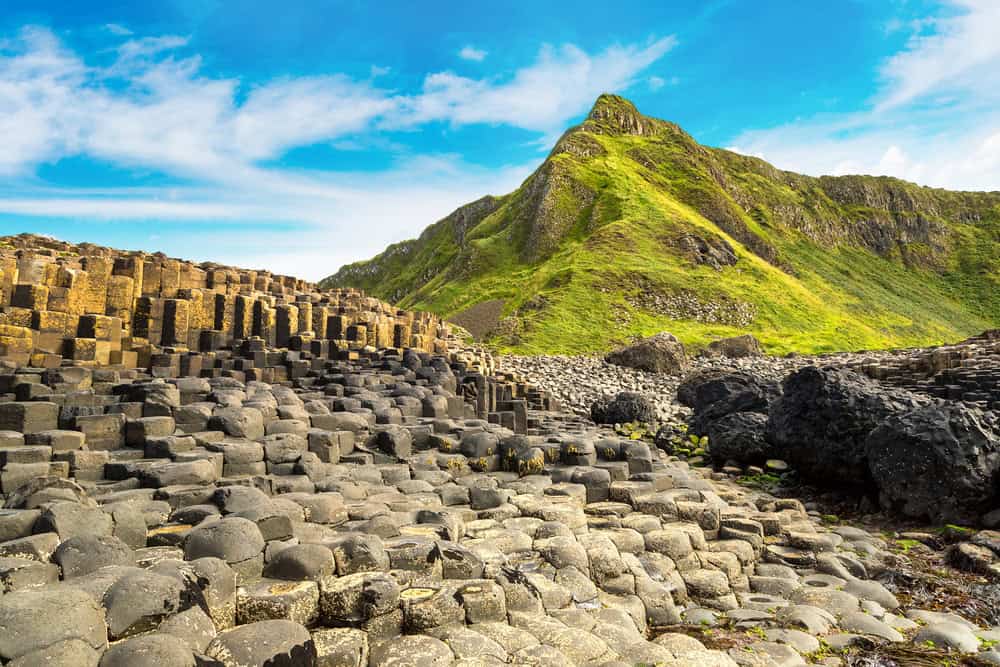
Giant’s Causeway, located on the Antrim coast of Northern Ireland, consists of approximately 40,000 interlocking basalt columns formed by ancient volcanic activity. The columns, mostly hexagonal in shape, appear as stepping stones leading from the cliff foot and disappearing under the sea. Admission to the visitor center costs around $15, which includes access to the causeway and a guided tour. The causeway’s regular geometric patterns and mythological associations make it one of the most intriguing and rare geological formations.
Pancake Rocks (New Zealand)
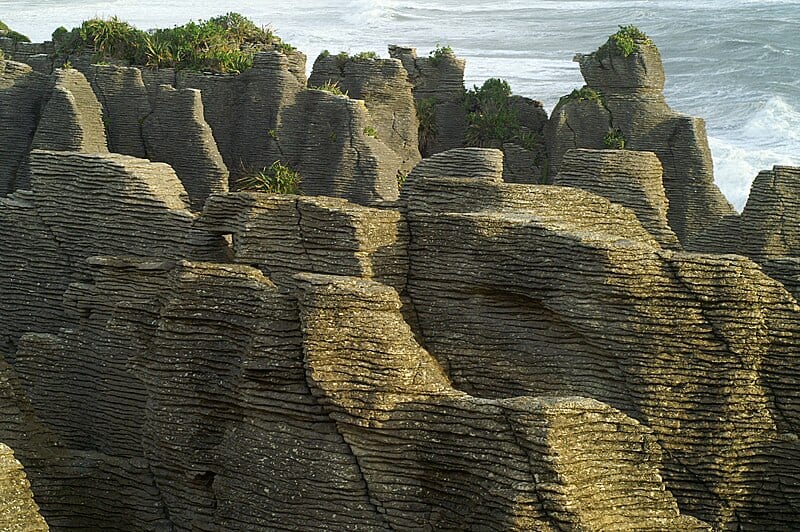
Situated on the west coast of New Zealand’s South Island, Pancake Rocks are a series of heavily eroded limestone formations that resemble stacked pancakes. These formations were created over millions of years through the deposition of marine sediments and the subsequent erosion by wind and water. The site is free to visit, and the best time to see the spectacular blowholes is during high tide. The Pancake Rocks’ distinctive shape and the dramatic blowholes make them a rare and captivating natural phenomenon.
The Fairy Chimneys (Turkey)
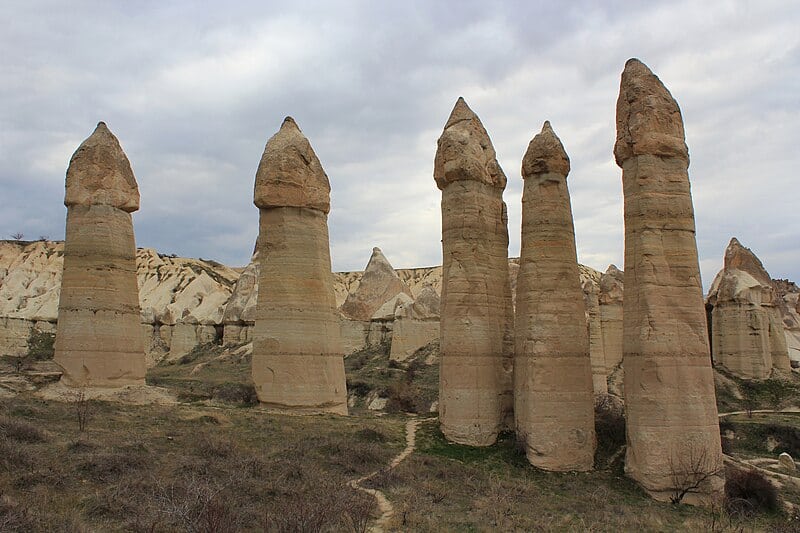
In the Cappadocia region of Turkey, the Fairy Chimneys are tall, thin spires of rock that rise from the ground like towers. These formations were shaped by volcanic eruptions and centuries of erosion, creating a landscape that seems almost otherworldly. The area is a UNESCO World Heritage Site, and access to certain parts may require a fee, typically ranging from $5 to $10. The surreal beauty and historical significance of the Fairy Chimneys make them a rare geological marvel.
The Stone Forest (China)
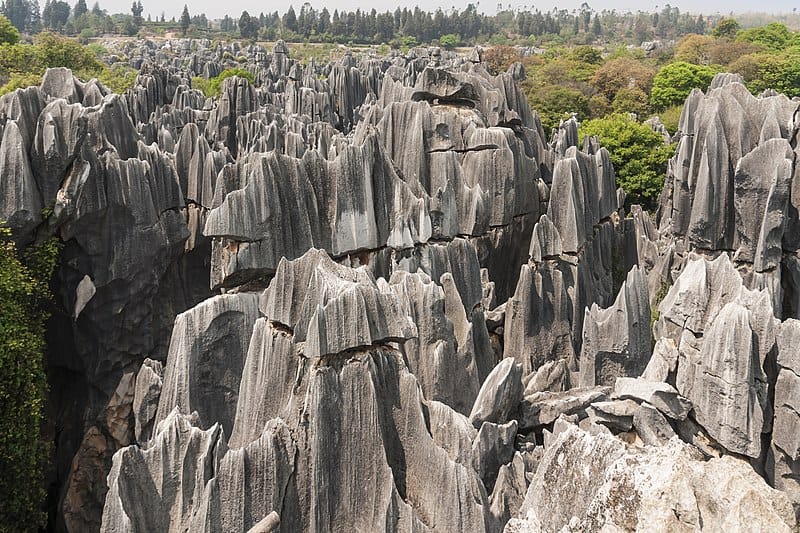
Located in Yunnan Province, China, the Stone Forest is a vast area of limestone formations that resemble a forest of petrified trees. The formations are the result of millions of years of geological activity, including the uplift of limestone bedrock and extensive erosion. Entrance fees to the Stone Forest National Park range from $25 to $30, making it a popular yet exclusive destination. The forest’s striking resemblance to a real forest and its immense scale make it a unique and rarely documented geological wonder.
The White Desert (Egypt)
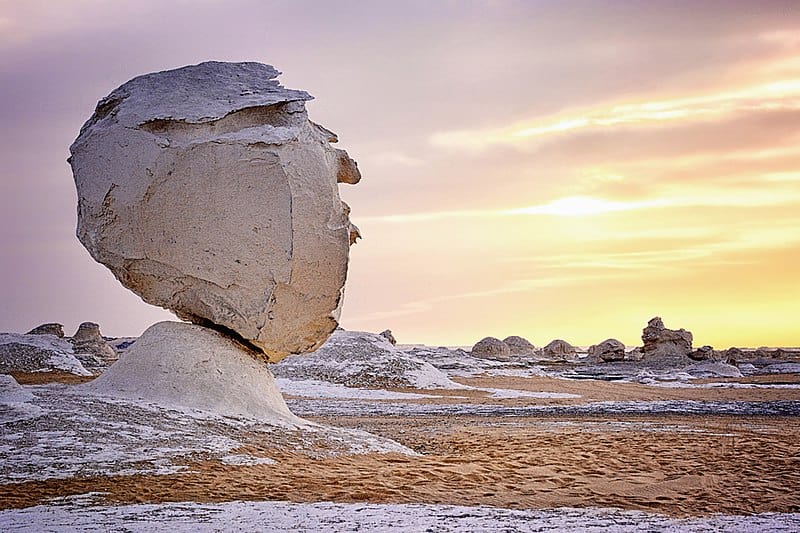
The White Desert, or Sahara el Beyda, is located in the Farafra Depression of Egypt. It is known for its surreal white rock formations, which have been sculpted by wind erosion into strange and otherworldly shapes. The desert is a protected area, and guided tours typically cost around $100 to $200, depending on the length and inclusivity of the tour. The stark contrast between the white formations and the surrounding desert sands adds to the White Desert’s rarity and visual impact.
The Pinnacles (Australia)
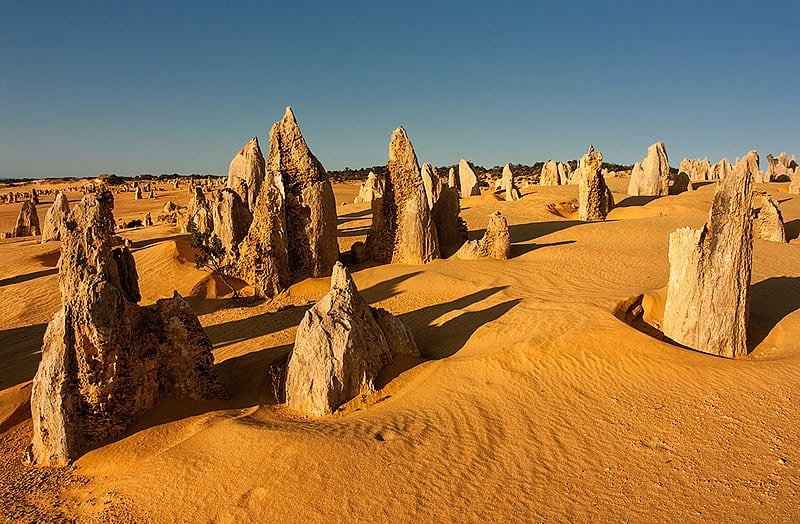
The Pinnacles are located within Nambung National Park in Western Australia, and they consist of thousands of limestone pillars rising from the desert floor. These formations were created over millions of years from ancient seashells that accumulated in the sand. Entrance to the national park is about $12 per vehicle, making it an accessible yet unique destination. The Pinnacles’ eerie landscape and the mystery of their formation make them one of Australia’s most intriguing geological sites.
The Tsingy de Bemaraha (Madagascar)
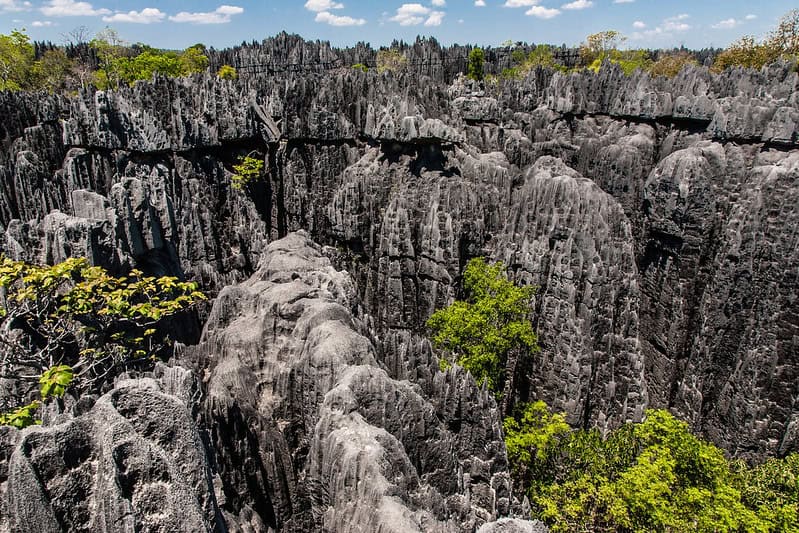
The Tsingy de Bemaraha is a protected area in Madagascar, famous for its sharp, needle-like limestone formations known as tsingy. These formations were created by the erosion of the limestone plateau, resulting in a labyrinth of razor-sharp pinnacles. Visiting this remote and rugged terrain requires a guided tour, which can cost between $100 to $300 depending on the duration and difficulty. The Tsingy de Bemaraha’s unique landscape and the challenges of exploring it make it a truly rare geological formation.
The Salar de Uyuni (Bolivia)
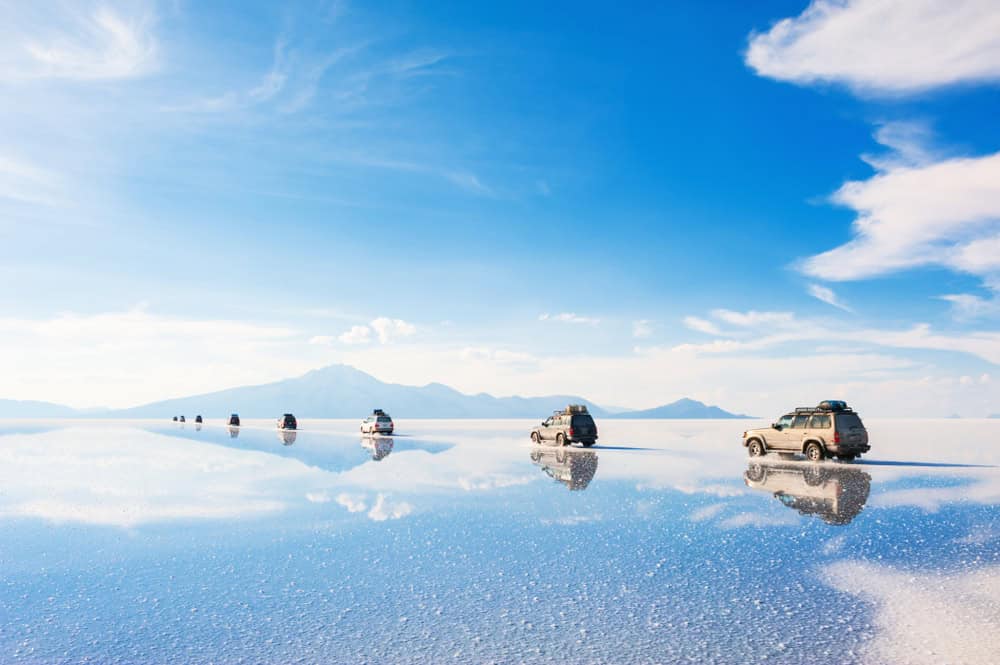
Salar de Uyuni is the world’s largest salt flat, located in southwest Bolivia. This expansive, flat expanse of salt is the result of the evaporation of prehistoric lakes, creating a vast, reflective surface that mirrors the sky. Tours to the salt flats range from $50 to $200, depending on the length and the inclusion of nearby attractions. The Salar de Uyuni’s otherworldly beauty and its role as a significant lithium reserve add to its value and rarity as a geological formation.
The Moeraki Boulders (New Zealand)
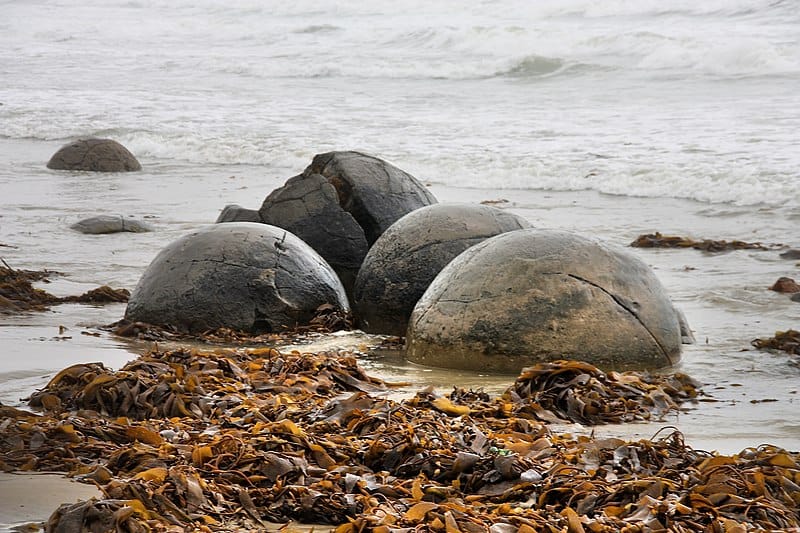
The Moeraki Boulders are large, spherical stones scattered along Koekohe Beach on the Otago coast of New Zealand. These boulders are concretions formed over millions of years within the mudstone cliffs that erode over time, revealing the boulders. Visiting the boulders is free, although a donation is suggested at the visitor center. The Moeraki Boulders’ perfectly round shapes and the mystery of their formation make them a rare and captivating geological phenomenon.
The Valley of the Moon (Argentina)
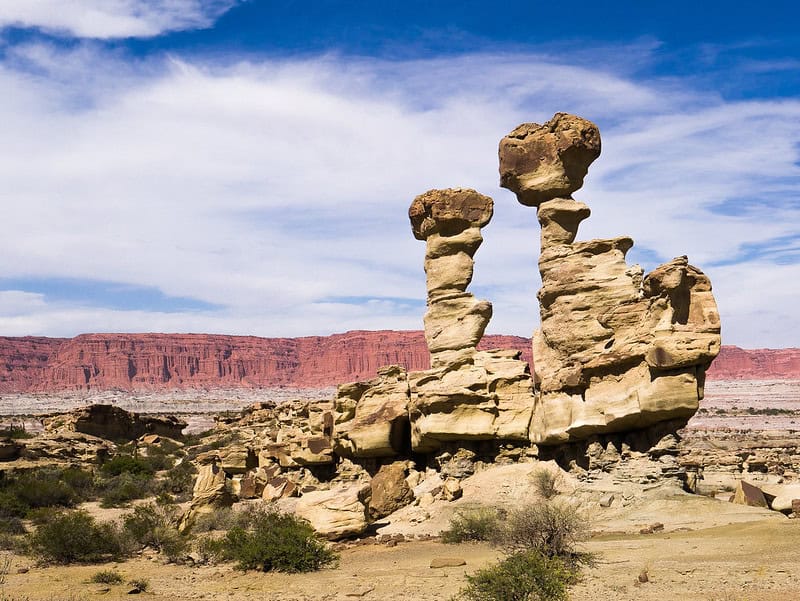
Ischigualasto Provincial Park, known as the Valley of the Moon, is located in Argentina and is renowned for its bizarre rock formations and lunar-like landscape. This area was formed over millions of years by the erosion of volcanic rock, revealing layers of fossilized plants and dinosaurs. The entrance fee to the park is around $10, with guided tours available for an additional cost. The Valley of the Moon’s eerie, desolate landscape and its paleontological significance make it a unique and rare geological site.
The Roraima Tepui (Venezuela)
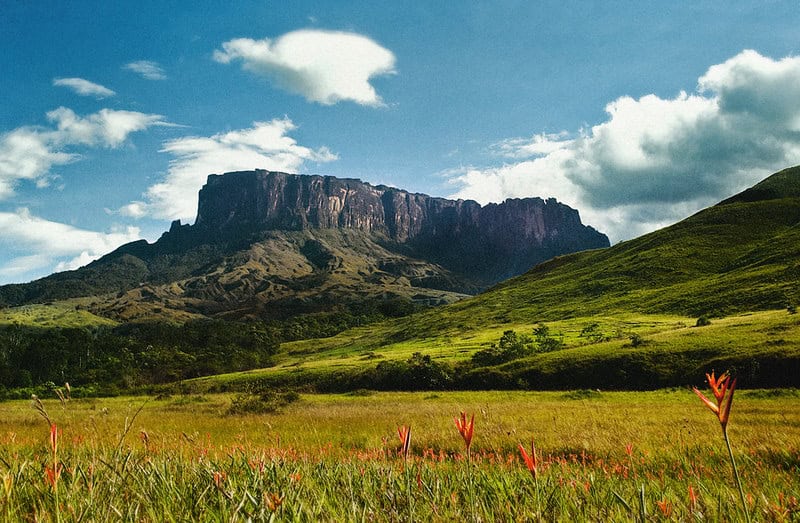
Roraima Tepui is one of the largest and most famous table mountains in Venezuela, rising nearly 9,000 feet above the surrounding rainforest. Its flat summit is home to unique flora and fauna, some of which are found nowhere else on Earth. Access to the tepui requires a multi-day trek with a guided tour, which can cost between $200 to $800 depending on the duration. The Roraima Tepui’s towering presence and isolated ecosystem make it a rare and awe-inspiring geological formation.
This article originally appeared on Rarest.org.
More From Rarest.Org

Exploring the dense forests at night reveals a hidden world of rarely seen nocturnal animals. These creatures are masters of stealth, adapted to thrive in the darkness. Read more.
17 Endangered Birds Brought Back from the Brink

Many bird species faced extinction in recent decades. Through conservation efforts, some have made remarkable recoveries. This article highlights a few of these incredible success stories. Each bird faced unique challenges. Read more.
Zoos around the world aim to provide visitors with a glimpse of rare and exotic wildlife. Housing these fascinating creatures not only attracts visitors but also aids in conservation efforts. Read more.

